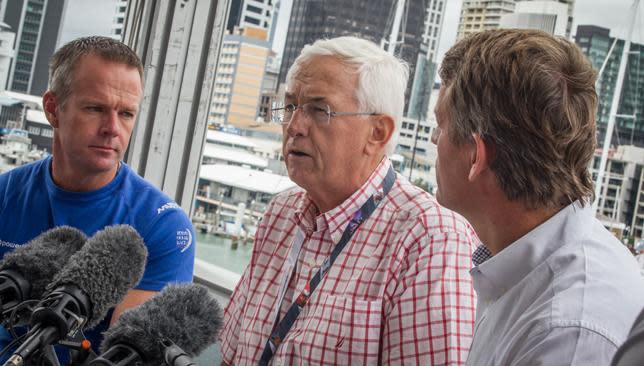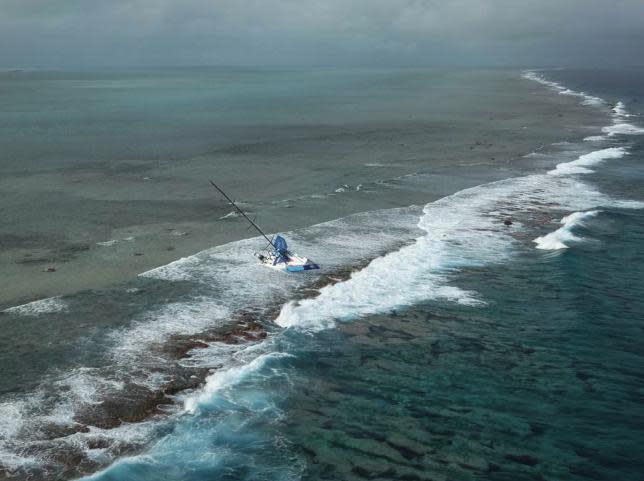An independent report into the grounding of Team Vestas Wind on the second leg of the Volvo Ocean Race was published on Monday, including a number of recommendations aimed at improving safety at sea for the entire ocean racing community.
In particular, it has suggested improving navigation charts and other on-board computer software to prevent similar incidents in the future.
– #Quiz360: WIN a dinner for two at Media Rotana
– The VOR battle intensifies as the group approaches ADOR and Dongfeng
Danish ship Vestas Wind (Chris Nicholson/AUS) ran aground on a reef at Cargados Carajos Shoals in the middle of the Indian Ocean during the Cape Town to Abu Dhabi leg on 29 November. The crew were forced to abandon ship.
The badly damaged Vestas Wind has now been recovered from the reef and is being rebuilt at the Persico shipyard in Bergamo, Italy, with a view to returning to the race for the final two legs starting in Lisbon, Portugal, in June.
The independent report on the incident, commissioned by RACE in December, was conducted by leading experts in the field: Rear Admiral (ret.) Chris Oxenbould (chairman), Stan Honey and Chuck Hawley.


The panel said the facts of the grounding had already been widely publicised and that its conclusions about what happened were based on interviews with the crew, race management and other relevant parties, and that the data recorded were not controversial.
“The team was unaware of any navigational hazards in its vicinity, incorrectly assessed the minimum charted depth at Cargados Carajos Shoals at 40 metres and believed it was safe to navigate through the shallows,” the panel summed up.
Their main recommendations are:
i. That a set of guidelines for the use of electronic charts be approved and adopted in the race and that they be subject to further review and improvement.
ii That the suppliers of the cartographic system used and the manufacturers of one of the on-board navigation software systems be informed of the deficiencies detected.
iii. The panel suggests that the Volvo Ocean Race use its influence in the sailing industry to encourage the development of an improved navigation system, including charts and software.


Knut Frostad, chief executive of the Volvo Ocean Race, said the event would take all recommendations into account.
He added: “Our plan is to circulate the guidelines to skippers and sailors (as recommended in the report) here in Auckland, and also include them in future Notices of Race.
“We intend for the report to serve as a useful document for the entire offshore racing community in the future. There will always be accidents at sea; we hope this will help make them less likely.”
The fleet will depart Auckland for the fifth leg of nine on Sunday 15 March. It is the longest and most challenging leg of the nine-month race, which takes the fleet across the Southern Ocean to the next destination of Itajaí in Brazil.



